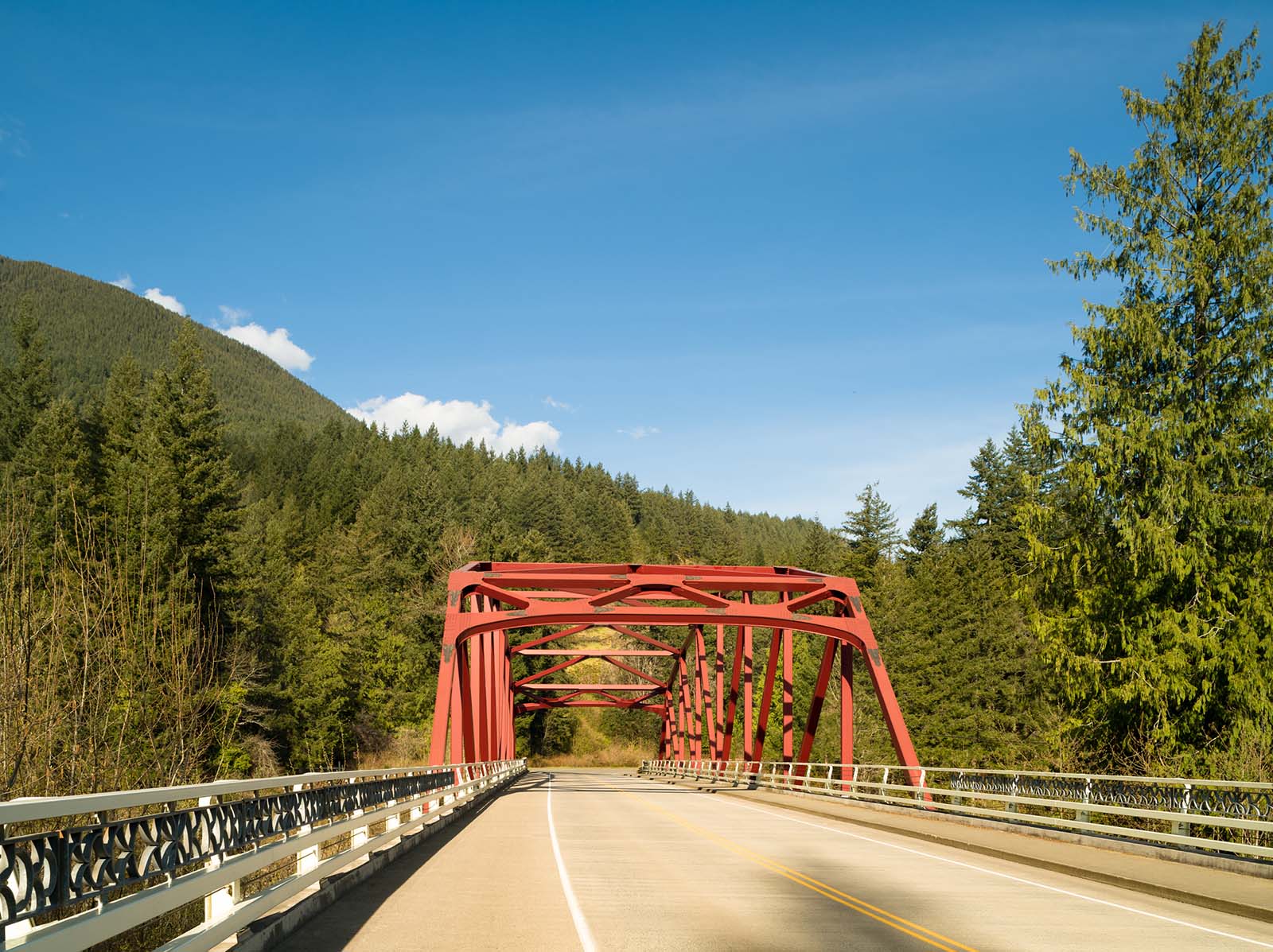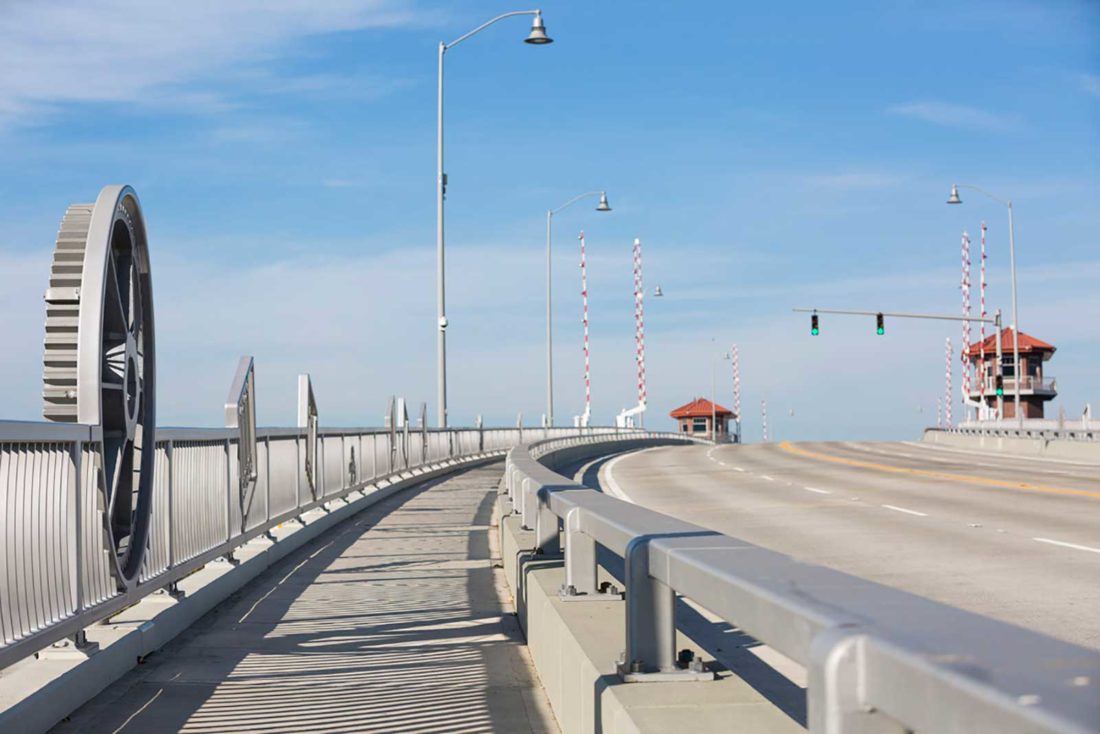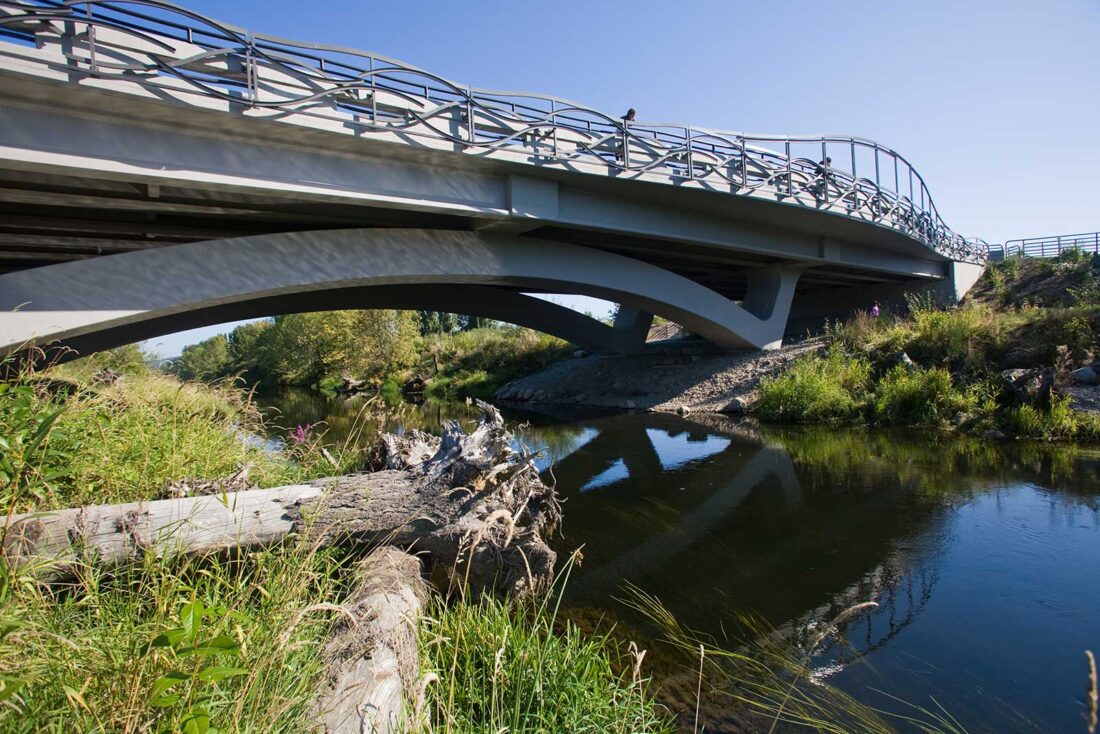Signature Bridges Connect Us to Form and Function

Amid the many types of public artworks in King County’s collection—portable and permanent works on the walls, large- and small-scale installations, pieces integrated into buildings, ephemeral experiences and participatory initiatives—one group of artworks is particularly unusual: our signature bridges. Since the late 1990s, 4Culture has partnered with the county’s Road Services Division to include artists on their bridge design teams. This collaborative and creative approach to developing transportation infrastructure elevates the experience of traveling over our region’s waterways, often offering a glimpse into who we are and where we want to go.
Many public art agencies around the country create artworks as part of other kinds of infrastructure projects, like transit stations, recycling centers or water treatment plants. Some also “activate” bridges with artist-designed elements or even residencies and performances, as the City of Seattle’s ARTS office has done with the Fremont Bridge, for example. But 4Culture stands alone nationally in the scope and scale of its bridge commissions.

Whether you’re traveling across a span on foot, by bicycle, or by car, the impact of an artists’ thinking can be subtle or dramatic. Maybe you’re going over the Duwamish River and you notice the large, elaborate gears embedded into the railing of the South Park Bridge; artist Barbara Grygutis took those from the original 1931 bridge and included them in its replacement to signal the location’s history and industrial identity. Visit the historic 1921 Meadowbrook Bridge (which, by the way, featured in Twin Peaks a couple of times) and you’ll see four relief panels by Bruce Myers that speak to the surrounding flora and fauna. For the Novelty Bridge in Duvall, Carolyn Law devised unique color experiences for travelers heading toward or away from the city. In Redmond, Cliff Garten created a series of curved design elements for the York Bridge, echoing the shapes of the river below.

Cross the Snoqualmie River via the Mt. Si Bridge and its bright red color will pop against the surrounding evergreens. Artist Cris Bruch gave some insight into his work, “I thought about the bridge as an event, an experience that should contain some awe and excitement, which has a narrative structure to it.” Indeed, from the nearby plantings he selected to the contrasting green elements he devised for the railing, Bruch’s contributions transform the journey from one end of the bridge to the other, calling attention to its environment and architecture while heightening the moment of one’s suspension over the river.
As time passes, older bridges inevitably require replacement or improvement. In 2013, 4Culture commissioned Leo Berk to create a Bridge Manual for future short-span bridge projects in King County. A few years prior, the county had identified more than 50 bridges between 20 and 110 feet long that needed to be replaced. Berk created a kit of parts that can be used in different combinations on all of these bridges—an effective way to enhance even the most humble of crossings.
Around the world, bridges are celebrated as placemaking icons: the London Tower, the Golden Gate, the Brooklyn Bridge, and countless others, both famous and not. In these beautiful feats of form and function, it’s impossible to distinguish where their engineering ends and their artistry begins. A perfect kind of public art.
Bridges are fundamentally about connecting, about linking one place with another, about opportunity and potential. Like art, they help keep us tethered to the earth, history, and each other.
